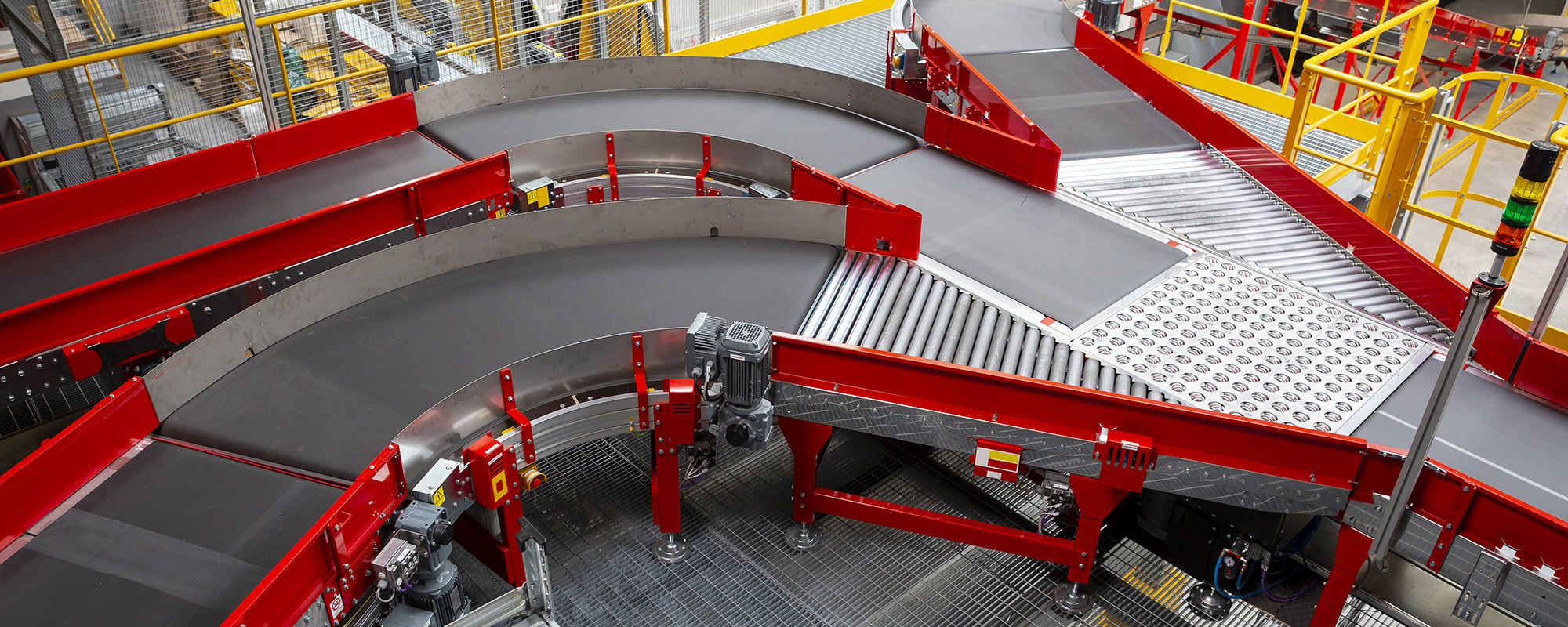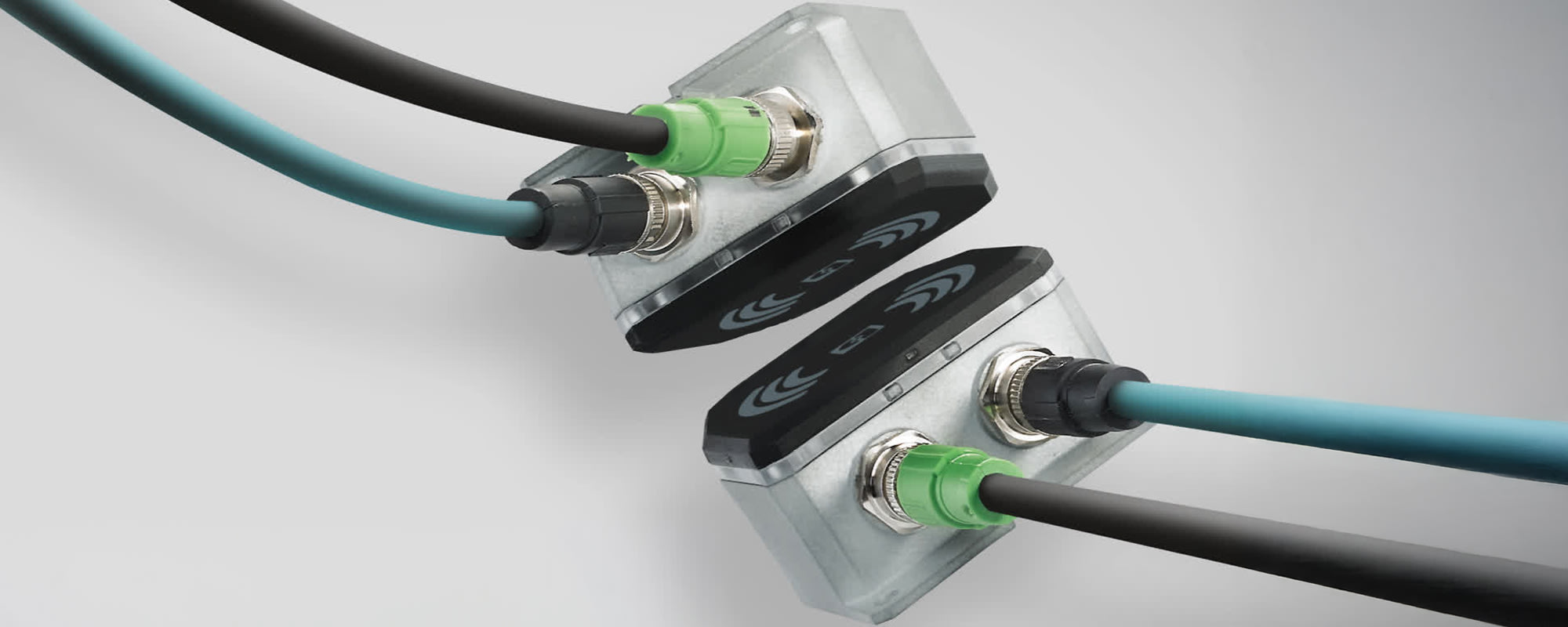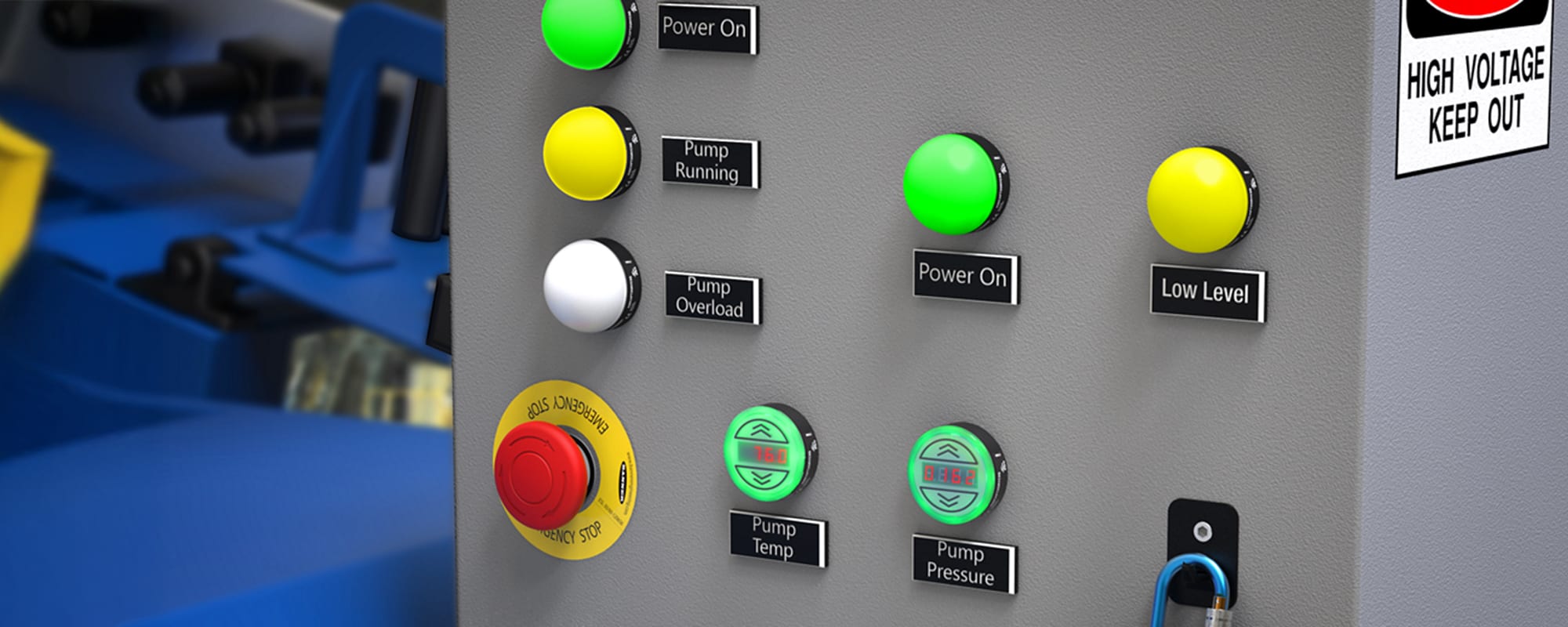Conveyor systems are ubiquitous and vital elements of manufacturing operations. ABB introduces the various types of conveyors, key considerations for new and retrofit conveyor systems, and some of the motor starting and protection solutions essential to keeping your conveyors running safely and efficiently.
Matthew Darroch, Product Marketing Manager, Jeff Leslie, Team Leader – Application Technology, and Caroline Iammarino, Smart Power Electrification Marcom, ABB
Conveyor systems are vital elements of the material handling systems used to move component parts and products around manufacturing facilities. These ubiquitous systems are especially useful for conveying heavy or bulky materials, as they reduce forklift truck traffic, as well as product and pallet damage, and result in higher volumes due to quicker pick, pack, and dispatch times.
There are many different types of conveyors used in manufacturing facilities.
- Gravity Conveyors use gravity, rather than motorized parts, to move products and are the most economical conveyor solution, as well as the easiest to install or relocate.
- Roller Conveyors feature a series of rollers in a frame and use gravity, manual labor, or power electronics to spin the rollers and move products.
- Spiral Conveyors are compact and versatile and are used to move materials between different levels or floors. They also have a uniform slope that ensures smooth operation to protect products.
- Belt Conveyors use a continuous belt to transport materials in a straight line or have them change heights or direction. They are ideal for use with bulky items.
- Flexible Conveyors bend and change shape to fill gaps, connect to truck trailers, and more. Some are equipped with power electronics while others utilize gravity.
- Sortation Conveyors direct materials from one conveyor line to another. They are customized for each application and used to efficiently identify, track, and transport materials.
- Incline Conveyors move materials from one level to another on a hinged or flexible belt and use belt cleats to control materials during elevation.
- Extendable Conveyors are used to connect the end of a conveyor system to dock doors and extend only as far as they’re needed for loading and unloading.
- Overhead Conveyors suspend materials from a powered chain equipped with specialized carriers that gently support awkward products.
- Pallet Conveyers safely move pallets and other heavy loads on belts, chains, skate wheels, or roller
Conveyor System Considerations
If you’re in the market for a new conveyor system or are upgrading your current conveyor system, there are a few key characteristics you should consider in terms of your application environment, including the system’s mechanical design, electrical design, and automation capabilities.

- The mechanical design includes the shape, size, and load capacity of a conveyor system and involves components including pulleys and rollers.
- The electrical design includes motors and starters, the selection of which should be based on your application’s need for protective features ranging from temperature monitoring and over- and under-voltage protection to emergency stop (E-stop) switches, as well as whether your system uses constant or variable speed.
- Automation capabilities reduce or eliminate human interaction with the conveyor system to improve safety and efficiency. For example, automated conveyor systems can use sensors to detect materials and relay that information to connected devices capable of performing programmed actions. They can also be used in tandem with robots.
You’ll also want to ensure that the conveyor systems and components you’re considering are safe, reliable, and energy efficient to help improve sustainability and reduce operating costs. Conveyor systems require two types of safety: mechanical and electrical. Mechanical safety solutions include physical barriers, like covers and guards, that help people keep a safe distance from moving parts, pinch points, and other dangerous areas and avoid accidents and injuries. Electrical safety solutions include safety devices like emergency stop switches, light curtains, and rope pulls and should all be highly visible and easily accessible.
Essential Conveyor System Solutions
Motor starters and protective devices are two of the most essential solutions for building and upgrading conveyor systems. These power circuit products are responsible for keeping conveyor systems up and running and are typically housed in conveyor control panels, which are used to control the entire conveyor system. Conveyor control panels include motor starters, indicators, start and stop buttons, and safety logic devices, otherwise known as safety relays, which are another essential element of conveyor systems. These products translate input received from on-the-line safety devices, like E-stops, light curtains, and rope pulls, and activate output devices, like redundant safety contactors or electronic compact starters, to quickly and safety shut down the conveyor system to ensure employee and equipment safety.
Motor starting and protection solutions are available with a wide variety of configurations, capabilities, and costs to suit any type of conveyor system.

The most basic of these essential products should enable continuous operation, be easy to install, incorporate safety features, and support digital connectivity. Enhanced versions should do all that as well as support coordinating core power devices; offer enhanced control, safety, and monitoring capabilities engineered for automated systems; and integrate additional protections, such as temperature monitoring, thermistor protection relays, safety relays, and safety controllers. Today’s most advanced motor starting and protection solutions typically offer all of these traits in addition to smart data capabilities. If you’re already leveraging or starting to integrate some Industry 4.0 technologies, you’ll want to select motor starting and protection solutions compatible with all major communication protocols and capable of supporting predictive maintenance, which can further reduce downtime and extend your equipment lifetime.
Conveyor motors are selected based on the weight, dimensions, and flow rate or speed of the conveyed products, while motor starters are selected based on the system’s demands for speed and accuracy. There are two main types of motor starters used in conveyor systems: direct on-line (DOL) starters and soft starters. DOL starters use maximum current and torque to start conveyor motors, regardless of the materials being conveyed, so they’re better suited for short conveyors with lighter materials and start times that are more than five seconds. Soft starters are ideal for conveyor applications with long belts, heavy or fragile materials, and start times that are less than five seconds.
DOL starters can be either open or enclosed. Enclosed DOL starters are housed in a robust enclosure that ensures high-reliability performance in harsh environments. They also have prewired control circuits and easy-to-follow wiring instructions, which makes them quicker and easier to install.
Soft Starters incorporate bypass contactors, overload protection, and other features to shield motors from electrical stresses and increase their lifespan. Their built-in features enable valuable space savings in control panels, reduce heat generation, and ease installation.

ABB’s PSTX Series soft starters leverage years of research and product development and extensive application knowledge to deliver complete motor protection, reliable operation, and flexible communication. Protection features include earth fault and over/under voltage protection and the ability to handle load and network irregularities. Reliability features range from torque control, standstill and dynamic braking, and motor heating to lock rotor protections. Communication features include build-in Modbus and optional Anybus capabilities.
Manual motor starters, which are also called motor protection circuit breakers and manual motor protectors, are another type of motor starter and protection product that can be used in conveyor systems. These solutions manually switch motors on or off; provide fuseless protection against short circuits, overloads, and phase failures; and are compact, cost effective, and easy to install. The protections they offer reduce potential damage to the motor or other components, reduce the risk of electrical fires, and reduce machine downtime.

ABB’s MS132 Series manual motor starters have a compact, cost-effective design engineered to deliver high-reliability performance in single- and three-phase applications in harsh environments. They feature a built-in disconnect function, temperature compensation, a trip-free mechanism, and a rotary handle with clear switch position indication, and they are available with accessories ranging from auxiliary and signaling contacts to shunt trips and terminal spacers.
Other essential power circuit solutions for conveyor systems include electronic compact starters, full-line voltage starters, motor controllers, disconnect switches, safety switches, enclosed rotary switches, and machine tool transformers.
Essential conveyor control circuit components include surge protective devices, molded case circuit breakers, contactors, and safety solutions.
Surge protective devices (SPDs) protect sensitive electronic equipment from surges caused by lightening, load switching, or other internal surge activity and are essential to minimizing downtime. Every control panel should have at least one SPD, whether it’s part of a conveyor system, a hospital, a datacenter, a wastewater treatment plant, or any other application with sensitive electronic equipment. There are also SPDs designed to keep the equipment connected to control panels’ control and data line cables up and running during stormy weather and extend equipment lifetimes. These are especially useful in smart conveyor systems.
Molded case circuit breakers (MCCBs) protect circuits against overloads, shorts, and ground faults. MCCBs are available in a variety of different sizes to meet a wide range of application needs and are also available variety of trip unit options and accessories. For example, ABB alone offers eight different series of MCCBs, as well as a retrofit kit, related products such as panelboards and switchboards, and accessories including motor operators, auxiliary and signal contacts, and bell alarms.

ABB’s SACE Tmax XT Series MCCBs are designed to deliver optimal ease of use, integration, and connectivity and are built to ensure extreme safety, reliability, quality, and performance. They feature a number of advanced features, including 1% accuracy embedded power metering, adaptive protections for complex systems, I/O and temperature monitoring, alarms for power quality, voltage, and frequency, and embedded software that handles load shedding, automatic transfer switching, and microgrid applications.
Contactors are specialized relays that are widely used to make or break electrical circuits in electric motor and lighting applications. In electric motor applications like conveyor systems, they’re used to protect PLCs from high-voltage electric surges by establishing an indirect connection between the motor and PLC. There are many different sizes and types of contactors — including knife blade switch, manual controller, and magnetic contactor variants ranging from palm size to several feet in length — and each has its own set of features, capabilities, and suitable applications.

ABB’s AF three-pole contactors represent a major advancement in motor control and power switching and set a new industry benchmark. They’re globally compatible, which optimizes logistics, and their integrated, electronically controlled coil consumes up to 80% less energy than competing solutions. They also have a compact design with built-in surge protection and push-in spring terminals for extremely fast, easy, and reliable wiring, and they’re engineered to over-bridge voltage drops and sags to maximize uptime.
Other essential conveyor control circuit components include miniature circuit breakers (MCBs), fuse holders, pilot lights and signaling devices, electronic relays and timers, and safety solutions such as E-stops, light curtains, and rope pulls.
Keep Your Conveyor Systems Running Safely and Efficiently with ABB and RS
ABB is a global technology leader in safe, smart, and sustainable electrification and automation technologies engineered to conserve resources and accelerate industrial transformation. Our extensive product portfolio includes a wide range of digital and connected innovations for low- and medium-voltage applications spanning conveyor systems and other automated industrial equipment to EV infrastructure, solar inverters, and modular substations.
RS offers a wide range of ABB products, including essential conveyor system solutions extending from motors starters, controls, and protective devices to switches, relays, and lighting and indication. RS also has a team of highly trained representatives who can help you select, install, and maintain conveyor power and control circuit solutions that are safe, smart, efficient, easy to install, and reliable.
For more information about ABB’s motor starting and protective solutions for conveyor systems, please visit the embedded links throughout this article and our “Motor Starting and Protection solutions for Conveyor Systems” application note. For assistance identifying, deploying, and maintaining ABB motor starting and protection solutions sure to keep your conveyor systems running safely and efficiently, please contact your local RS representative at 1.866.433.5722 or reach out to the RS technical support team.







